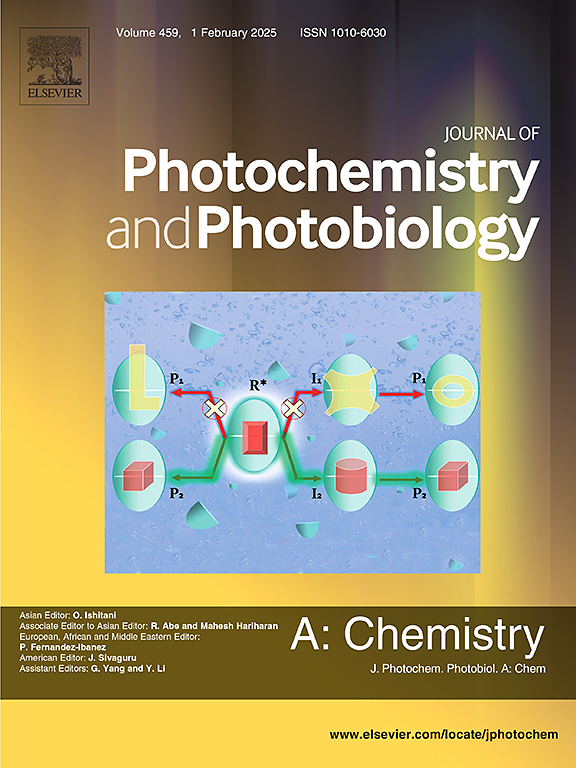Optimized PEG/eudragit-Zn4V2O9 nanostructures for effective catalytic and antibacterial activity with computational insights
IF 4.1
3区 化学
Q2 CHEMISTRY, PHYSICAL
Journal of Photochemistry and Photobiology A-chemistry
Pub Date : 2025-03-01
DOI:10.1016/j.jphotochem.2025.116365
引用次数: 0
Abstract
A low-temperature co-precipitation approach was used to synthesize polyethylene glycol (PEG) and eudragit (Eud) doped zinc vanadate (Zn4V2O9) for effective methyl orange dye reduction and antibacterial activity. This study aimed to increase the catalytic and antibacterial efficacy of Zn4V2O9, by providing more active sites, and charge transfer efficacy with dopants. Varying concentrations of PEG were doped into Eud-Zn4V2O9, 3 % PEG/Eud-Zn4V2O9 was optimized for catalytic activity and 6 % PEG/Eud-Zn4V2O9 was optimized for antibacterial activity. Comprehensive characterizations revealed monoclinic crystal structure, polycrystalline behavior, reduced bandgap energy, and multiple morphologies of PEG/Eud-Zn4V2O9. The optimized sample showed 97.85 % degradation of methyl orange with a reducing agent without the presence of light. 6 % PEG/Eud-Zn4V2O9 proved to be an effective to be an effective antibacterial agent (inhibition zone 6.55 ± 0.02) against S. aureus. The docking analysis of Eud-doped Zn4V2O9 and PEG/Eud-doped Zn4V2O9 laid out the suppressive effects of DNA gyrase enzyme in S. aureus, besides their antibacterial properties.
求助全文
约1分钟内获得全文
求助全文
来源期刊
CiteScore
7.90
自引率
7.00%
发文量
580
审稿时长
48 days
期刊介绍:
JPPA publishes the results of fundamental studies on all aspects of chemical phenomena induced by interactions between light and molecules/matter of all kinds.
All systems capable of being described at the molecular or integrated multimolecular level are appropriate for the journal. This includes all molecular chemical species as well as biomolecular, supramolecular, polymer and other macromolecular systems, as well as solid state photochemistry. In addition, the journal publishes studies of semiconductor and other photoactive organic and inorganic materials, photocatalysis (organic, inorganic, supramolecular and superconductor).
The scope includes condensed and gas phase photochemistry, as well as synchrotron radiation chemistry. A broad range of processes and techniques in photochemistry are covered such as light induced energy, electron and proton transfer; nonlinear photochemical behavior; mechanistic investigation of photochemical reactions and identification of the products of photochemical reactions; quantum yield determinations and measurements of rate constants for primary and secondary photochemical processes; steady-state and time-resolved emission, ultrafast spectroscopic methods, single molecule spectroscopy, time resolved X-ray diffraction, luminescence microscopy, and scattering spectroscopy applied to photochemistry. Papers in emerging and applied areas such as luminescent sensors, electroluminescence, solar energy conversion, atmospheric photochemistry, environmental remediation, and related photocatalytic chemistry are also welcome.

 求助内容:
求助内容: 应助结果提醒方式:
应助结果提醒方式:


